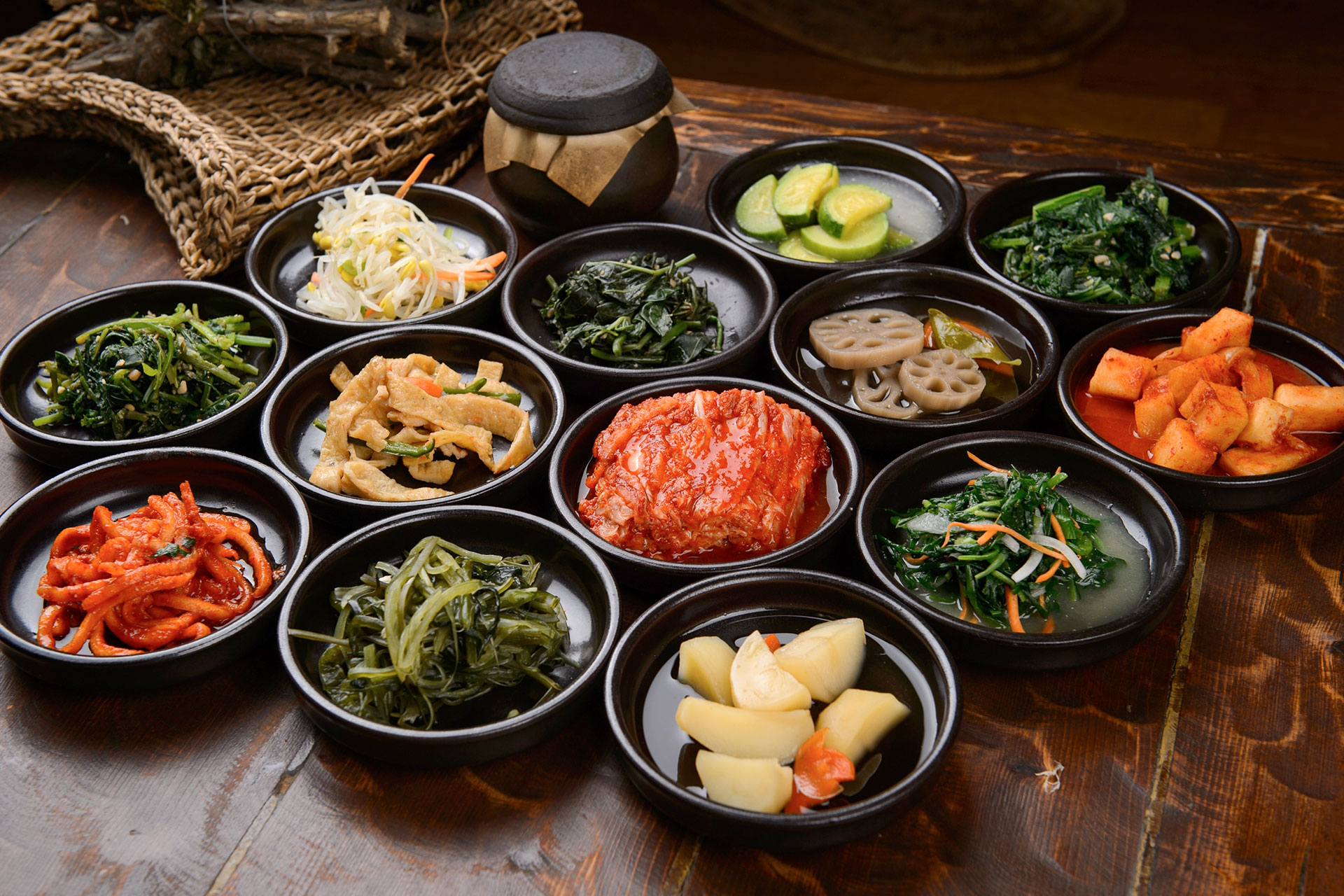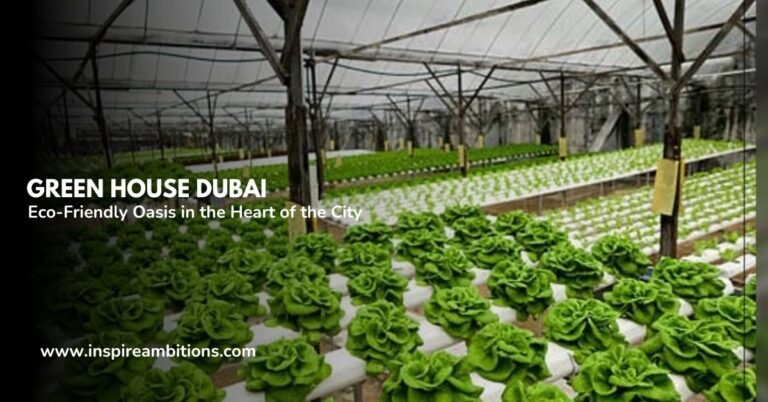What is Banchan in Korean Cuisine? – An Introduction to Traditional Side Dishes
Banchan forms the heartbeat of traditional Korean dining, setting the stage for a flavorful symphony of tastes and textures. This array of small side dishes is more than just an accompaniment; it’s an essential part of the culinary experience. Whether they’re composed of pickled vegetables, seasoned meats, or an assortment of pancakes, each banchan dish is designed to complement and enhance the flavours of the main meal.

Understanding banchan is critical to appreciating the balance and variety of Korean cuisine. These dishes are not mere afterthoughts; they’re placed at the centre of the table, encouraging sharing and community. Their meticulous preparation methods range from pickling and fermenting to stir-frying and steaming, displaying a diverse culinary craft.
As one delves into the subtleties of banchan, the nuances of Korean flavours and cooking techniques become apparent, creating a dining experience that is both communal and deeply personal.
What is Banchan in Korean Cuisine? Key Takeaways
- Banchan is central to the Korean भोजन अनुभव, offering diverse flavours and textures.
- These small side dishes embody various preparation techniques, highlighting Korean culinary artistry.
- Banchan celebrates the interplay between distinct dishes and the main course, fostering a shared dining culture.
Historical Context of Banchan
In the rich tapestry of Korean cuisine, banchan are much more than just side dishes; they connect to a long history that dates back centuries and reflects cultural shifts and influences throughout the ages.
Three Kingdoms Period
Banchan traces its origins to the Three Kingdoms period of Korean history, from 57 BC to 668 AD. This era saw the rise of the three kingdoms—Goguryeo, Baekje, and Silla—each contributing to developing Korean culture and cuisine. It was a time of political and culinary beginnings, where the foundations of banchan began to take shape.
Buddhist Influence
Buddhism significantly impacted Banchan’s evolution during the Three Kingdoms period, especially when Buddhism gained prominence around the 300s AD. The religion’s restrictions on meat led to an increased focus on vegetables and plant-based dishes, shaping banchan as primarily vegetarian offerings.
The Buddhist influence cultivated the tradition of seasonally changing vegetable side dishes that remain central to banchan today.
Joseon Dynasty
The Joseon Dynasty (1392-1897) created a hierarchical society where banchan reflected one’s social status. Royal court cuisine, known as surasang, often included up to 12 banchan, showing the elaborate nature of meals for the elite. In contrast, commoners’ tables had fewer side dishes, but banchan remained an integral part of Korean dining regardless of status.
Mongol Invasions
दौरान Mongol invasions in the 13th century, the Korean peninsula experienced cultural exchange and culinary adaptations. Mongolian influences can be seen in introducing new proteins and cooking techniques to Korean cuisine.
Despite these changes, banchan endured, showcasing the resilience and adaptability that Korean dishes possess, making Banchan a notable survivor through times of upheaval.
Main Components of Banchan
Banchan, the collection of side dishes defining a Korean meal, features diverse flavours and ingredients. Each dish brings a unique taste and charm, from the tangy and spicy to the savoury and gentle.
Kimchi
Kimchi, a fermented dish typically made with cabbage and radishes, is a staple in Korean cuisine. The vegetables are seasoned with a vibrant mix of chilli pepper, लहसुन, scallions, और gochujang (Korean chilli paste), which gives kimchi its distinctive red hue and piquant flavour.
Namul
Namul refers to various seasoned vegetable dishes and is an integral part of banchan. Ingredients such as पालक, अंकुरित फलियां, और zucchini are blanched or sautéed, then artfully flavoured with sesame oil, सोया सॉस, लहसुन, और तिल के बीज.
Bokkeum
This category includes stir-fried dishes involving various ingredients, from आलू को टोफू या meat. Each bokkeum dish is cooked with a piquant sauce and often a sprinkle of scallions for freshness.
Jorim
Jorim denotes dishes simmered in a seasoned broth until the ingredients –vegetables like eggplant or proteins such as मछली या meat – are infused with various savoury flavours, typically सोया सॉस.
Jeon
These are pan-fried items similar to pancakes, incorporating elements like समुद्री भोजन, meat, या सब्ज़ियाँ. A popular variant is pajeon, a scallion pancake that highlights scallions as the star ingredient, making it flavorful and visually appealing.
Banchan and Main Course Harmony
In Korean dining, the relationship between banchan and the main course is pivotal, creating a balance that enhances the entire meal. This dynamic interplay is designed to provide both a contrast and complement to the flavours of the main dishes.
Contrast with the Main Course
Banchan often provides a textural और flavour contrast to the main course. For example, if the main dish is bulgogi, which is savoury and sweet, the banchan could be kimchi, with its sharp, tangy taste and crunch. This contrast ensures that each bite is a new experience, preventing flavour fatigue and heightening the enjoyment of bap (rice) and tang (soup).
Complementing Flavors
Conversely, banchan can also complement the main dishes by sharing common ingredients or seasonings. With a main course like galbi, grilled marinated beef ribs, side dishes such as seasoned spinach या अंकुरित फलियां may be seasoned with sesame oil, harmonizing with the main dish’s flavours.
These banchan serve to complement the meat’s richness and create a complete meal when paired with चावल और soup, typical of a traditional Korean meal setting.
Banchan Preparation Methods
Banchan are essential to Korean cuisine, featuring a variety of side dishes that enhance the main meal. The preparation methods for banchan are as much about flavour as they are about nutrition.
Fermentation
Fermentation is a traditional method used to develop complex flavours and preserve vegetables. Common starters are salt, gochujang (red pepper paste), and doenjang (soybean paste).
For example, Korean kimchi is typically made by fermenting napa cabbage with a mixture of salt, अदरक, red pepper, and other spices, allowing it to ferment over time to achieve its characteristic tang and depth of flavour.
ब्लैंचिंग
Blanching is briefly boiling vegetables, like पालक या अंकुरित फलियां, and then plunging them into cold water. This method retains vibrant colour and nutrients. It prepares the vegetables for further seasoning with sesame oil और सोया सॉस, enhancing their taste and making them a refreshing addition to the Banchan lineup.
भाप
Steaming is a gentle cooking method that brings out the delicate flavours of ingredients without the need for added fats. Vegetables like soybean sprouts can be steamed to soft perfection and then dressed lightly with sesame oil, salt, and sometimes a hint of अदरक to elevate their natural taste.
Seasoning
The seasoning makes each banchan dish unique, balancing the flavours to complement the main meal. Typical seasonings include सोया सॉस, sesame oil, and finely ground red pepper. These ingredients are used in various combinations to season vegetables, such as sprouts और पालक, transforming them into flavorful dishes that stimulate the palate.
Banchan in Modern Cuisine
As Korean culture continues to influence global dining, banchan remains at the core of this culinary exchange, keeping your lunch and dinner vibrant and varied.
Vegetarian and Vegan Options
Banchan provides शाकाहारी और शाकाहारी options, integrating vegetables, tofu, and grains. These small but richly flavoured dishes often include seasoned spinach, soybean sprouts, or stir-fried eggplant. Adaptations of classic banchan also frequently use shiitake mushrooms and other umami-rich ingredients to craft satisfying, plant-based variations.
Banchan in Korean Restaurants
Banchan maintains its traditional role in Korean restaurants as a collection of Korean side dishes that complement the main meal. The diverse selection at your table varies from kimchi and pickled vegetables to pancake and fish cake varieties.
These are not only appetizers but integral elements of the Korean dining experience, showcasing the cuisine’s balance and philosophy with every lunch and dinner served.
Nutritional Aspects of Banchan
The Korean tradition of serving a variety of side dishes known as banchan complements the main meal and serves as a vital source of nutrients. These dishes offer a wealth of vitamins and minerals essential for maintaining a balanced diet.
Vitamins and Minerals Content
Banchan often includes a variety of leafy vegetables, rich in vitamins such as A and C, necessary for immune function and skin health. Sesame seeds और beans, staples in many Banchan recipes, provide minerals like calcium और iron, supporting bone health and oxygen transport in the blood.
Cucumber और अन्य vegetable-based sides contain additional vitamins and are hydrating due to their high water content. Including these dishes can boost your daily intake of crucial micronutrients with minimal effort.
Banchan and Dietary Balance
Incorporating banchan into your diet contributes to a more balanced dietary intake. These small yet diverse servings encourage the consumption of a broad range of food types, promoting macronutrient balance and micronutrient diversity.
उदाहरण के लिए, iron-rich banchan complements rice-based dishes by enhancing iron uptake significantly when the rice is enriched or whole grain. A well-rounded assortment of banchan ensures you receive a spectrum of nutrients with each meal.






